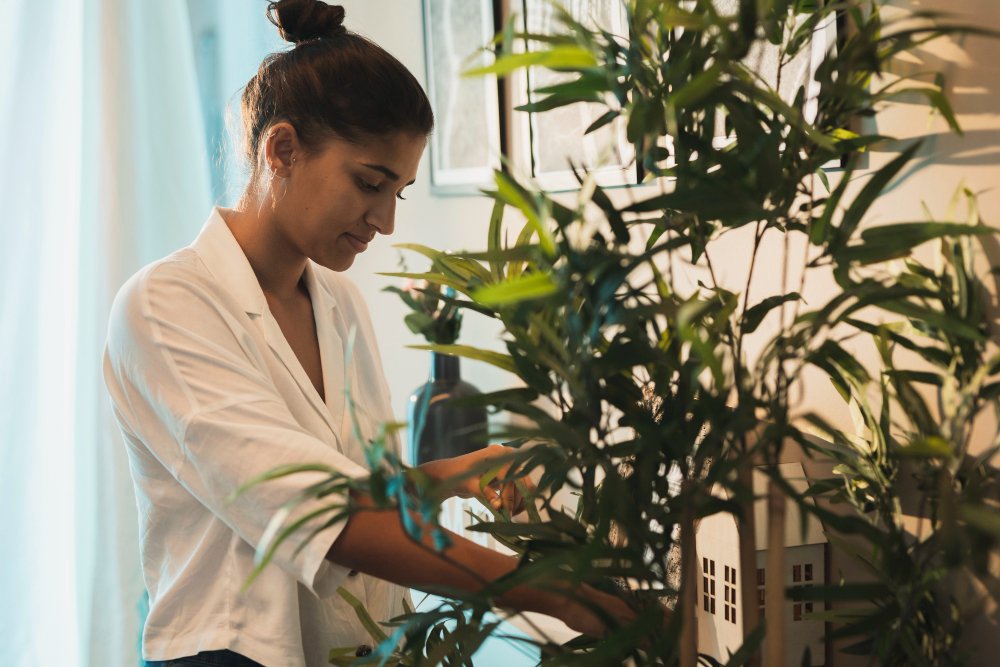How to Trim a Rubber Plant: A Step-by-Step Guide
Introduction
Rubber plants (Ficus elastica) are popular indoor plants known for their glossy leaves and air-purifying qualities. Regular trimming is essential to maintain their shape and promote healthy growth. In this article, we’ll discuss the proper techniques for trimming a rubber plant to ensure it thrives in your home.
Benefits of Trimming
Trimming your rubber plant has several benefits, including:
- Promoting Growth: Removing dead or overgrown foliage encourages new growth.
- Maintaining Shape: Regular trimming helps to control the plant’s size and shape.
- Preventing Disease: Pruning removes diseased or damaged parts, reducing the risk of infection spreading.
Preparing to Trim Your Rubber Plant Necessary Tools and Equipment
Before you begin, gather the following tools:
- Sharp pruning shears or scissors
- Clean, sharp knife (for larger stems)
- Rubbing alcohol or disinfectant wipes (to sterilize tools)
- Gloves (optional)
Safety Precautions
Always wear gloves when handling rubber plants, as the sap can irritate the skin. Additionally, sterilize your pruning tools with rubbing alcohol to prevent the spread of disease between plants.
Step-by-Step Guide to Trimming Assessing the Plant’s Health
Start by examining your rubber plant for signs of damage, disease, or overgrowth. Look for yellowing or brown leaves, leggy stems, or any areas that appear unhealthy.
Identifying Areas for Trimming
Use your pruning shears or scissors to remove any dead, damaged, or yellowing leaves. Cut the stems just above a leaf node or junction to encourage new growth.
Making Clean Cuts
Ensure your pruning tools are sharp to make clean cuts and minimize stress on the plant. Avoid tearing or crushing the stems, as this can lead to further damage.
Aftercare and Maintenance Pruning Frequency
Trim your rubber plant as needed to maintain its shape and health. Aim to prune lightly every few months, focusing on removing dead or overgrown foliage.
Promoting New Growth
After trimming, place your rubber plant in a well-lit area with indirect sunlight. Water it regularly and provide occasional fertilizer to encourage new growth and keep the plant healthy.
Common Mistakes to Avoid Over-Pruning
Avoid excessive trimming, as this can weaken the plant and stunt its growth. Only remove what is necessary to maintain its shape and health.
Using Dull or Improper Tools
Using dull or improper tools can result in ragged cuts that damage the plant. Keep your pruning shears sharp and use a clean, sharp knife for larger stems.
Tips for Success Observing Proper Timing
Trim your rubber plant during the growing season (spring or summer) when it is actively producing new growth. Avoid pruning during the dormant winter months.
Keeping the Plant Healthy
Maintain a consistent watering schedule, provide adequate sunlight, and monitor for signs of pests or disease to keep your rubber plant thriving.
Conclusion
Trimming your rubber plant is a simple yet essential task for maintaining its health and appearance. By following the proper techniques and precautions outlined in this guide, you can ensure your plant remains vibrant and beautiful for years to come.
FAQs
How often should I trim my rubber plant?
Trim your rubber plant lightly every few months or as needed to remove dead or overgrown foliage.
Can I use regular scissors to trim my rubber plant?
While regular scissors can be used, sharp pruning shears are preferable for making clean cuts and minimizing stress on the plant.
Is it normal for my rubber plant to drop leaves after trimming?
Some leaf drop may occur after trimming, but this is usually temporary as the plant adjusts to the pruning. Ensure proper care to encourage new growth.
Can I propagate cuttings from my rubber plant?
Yes, rubber plants can be propagated from stem cuttings. Place the cuttings in water or a moist potting mix until roots develop.
What should I do if my rubber plant develops brown spots after trimming?
Brown spots may indicate fungal or bacterial infection. Remove affected areas and treat the plant with fungicide if necessary.






